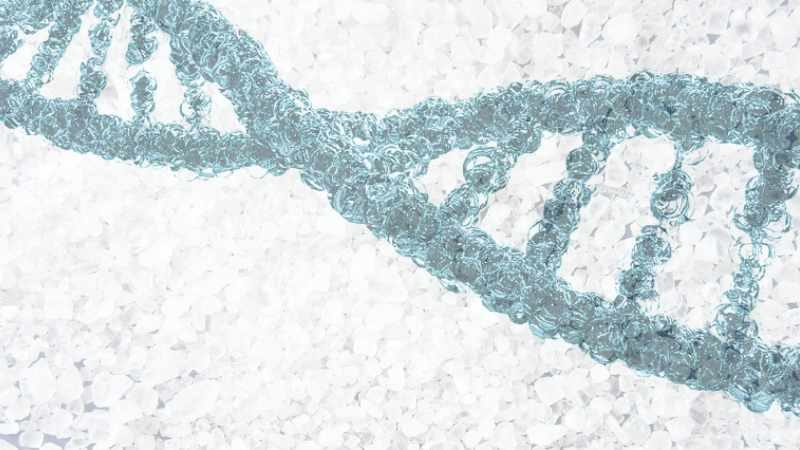At acib, scientists investigated the benefits of implementation of salt-active nucleases in the purification of measles virus, a promsing canditate for cancer treatment and prevention of infectious diseases, ensuring a higher product purity.
The removal of impurities plays an important role in production of biopharmaceuticals such as vaccines. Especially the residual amount of DNA is strongly regulated by the Food and Drug Administration (FDA) to ensure patient safety. To meet these requirements, an extensive downstream process is usually employed. Moreover, chromatin as a special form of double-stranded DNA has been overlooked in the past, especially in vaccine development. Due to their similar size, it is very difficult to distinguish and separate virus and chromatin particles. This similarity is a challenge in downstream processing. As a result, high impurity levels at the end of the purification process remain, indicating insufficient downstream processing.
Salt-active nuclease treatment as a possible solution
Chromatin structures cannot withstand high salt concentrations, leading to a disassociation of DNA and histone proteins. Therefore, DNA is made accessible in the presence of salt, especially for DNA digestion. Traditional endonucleases, such as the commonly employed Benzonase, are not able to achieve high activities at these required salt conditions. Therefore, the ability of novel, salt-active nucleases, such as M-SAN from ArcticZymes, to digest DNA in its chromatin form was evaluated.
Virus purification using affinity chromatography in combination with endonuclease treatment
Measles virus was purified using an affinity chromatography, which is able to separate particle populations. However, chromatin presence influences the elution of the virus, resulting in a co-elution of virus with chromatin. When chromatin presence is reduced, the capacity of the resin is increased as the competition of chromatin with the virus is decreased. To maximize purity and yield, Benzonase and M-SAN were compared in their ability of chromatin digestion prior to affinity chromatography. A difference was immediately indicated by the obtained elution profiles. The chromatin peak was reduced after Benzonase treatment, however, it was only successfully removed after the treatment with M-SAN. This indicates that M-SAN has the potential to digest DNA in chromatin form, while Benzonase cannot. As a result, the purity and yield of the virus increased.
Highly purified measles virus
Scientists at acib in collaboration with ArcticZymes have addressed the challenge of chromatin removal by developing a purification process for recombinant measles virus, a promising candidate for the treatment of infectious diseases or oncolytic purposes. This process was developed for fast selection of a vaccine candidate, for example during pandemics, or for characterization studies of the virus itself. Moreover, highly pure viruses are needed for analytical method development. As chromatin is present after virus production in the cell culture supernatant, the combination of an endonuclease treatment using a salt-active nuclease, and an affinity chromatography step, led to high purities required for therapeutic applications. Surprisingly, the product yield was increased as chromatin was digested prior to chromatographic step, increasing the binding capacity. Moreover, the attention of chromatin presence in cell culture supernatants was increased, making scientists aware of this issue.
With this important work, acib scientists provided an example of chromatin persistence in vaccine manufacturing processes. The awareness of this complex form of DNA in vaccine production was increased. Moreover, a possible solution to digest chromatin effectively was given, which is also feasible in industrial production scale. The project was performed in close cooperation with the company partner and acib scientists, ensuring transfer of scientific knowledge to industry.
Project Partners
Picture: acib & Pixabay
